How It's made
Manufacturing
The porcelain manufacturing process is rather complex. For example, up to 80 process steps are required to make a cup. The Imperial Porcelain Manufactory preserved the essence of the classic porcelain technology developed by D. I. Vinogradov as early as the 18th century. Porcelain mix is made of fine kaolin (white clay), quartz, feldspar and other alumina silicates and includes up to 40 various additives.
The ‘soft’ porcelain formula was developed at the Manufactory in the early 19th century by famous chemist Nikolai Kachalov. Fine bone china is remarkable for its high degree of whiteness, delicacy, and lightness, similar by its characteristics to the renowned ancient Chinese porcelain known as ‘eggshell’. The Imperial Porcelain Manufactory developed the egg-shell bone porcelain technology 50 years ago and was the first in Russia to release the commercial batch of articles of increased fineness and transparency. The Imperial Porcelain Manufactory products are decorated with hand or machine-made overglaze and underglaze painting, or a combination of these, with paints based on rare and precious metals.
Key raw materials (see below):
Kaolin; Quartz, feldspar, pegmatite; Clay; Silica sand; Peshelan plaster; Alumina; Pipe bones.
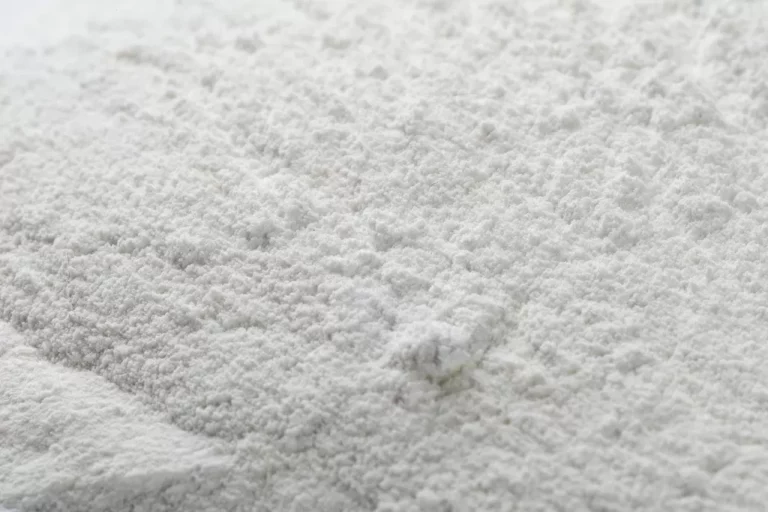
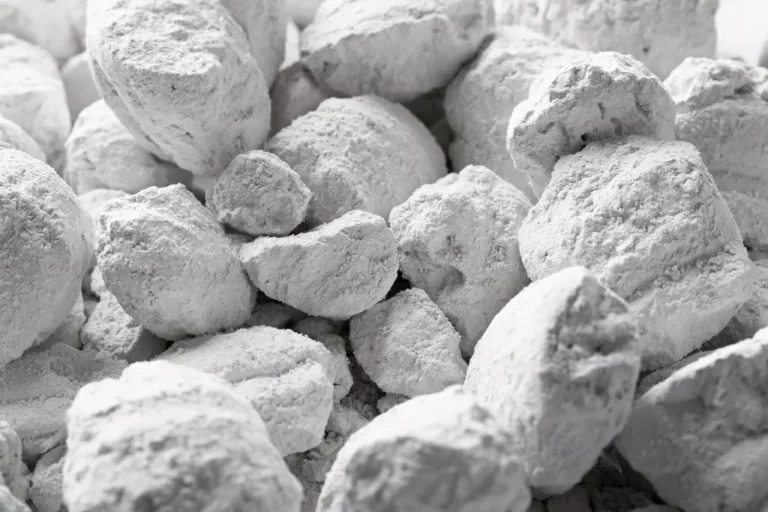

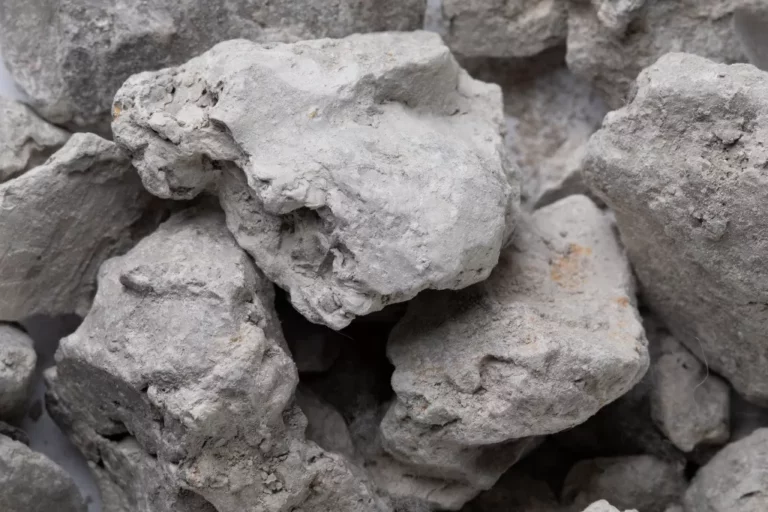

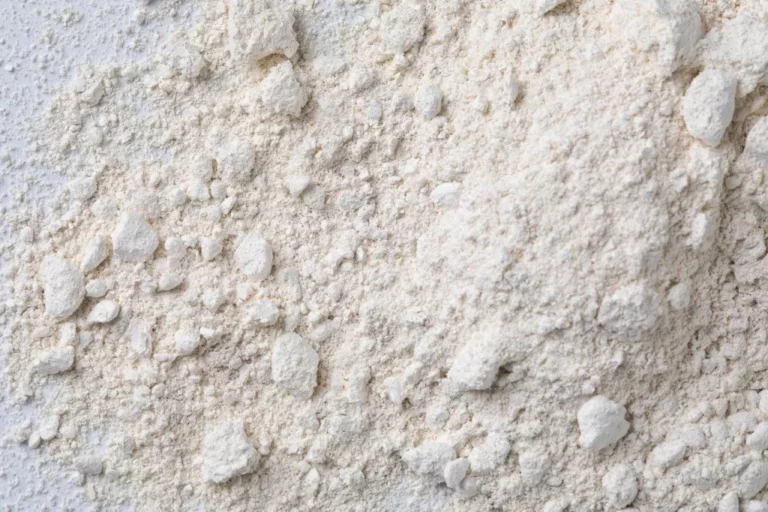
Hollow ware is made using manual or machine forming techniques. Liquid porcelain mix (slip) is poured into a plaster mould which consists of two or more sections. As plaster absorbs moisture, a solid ceramic body is formed in the mould. When this is thick enough, the excess slip is removed. Still fragile ware is taken out of the mould to be further dressed and dried out. Flat articles are made of more dehydrated mix using semi-automatic moulders. Porcelain hardens at high temperatures: the 24-hours’ bisque firing process (at up to 900°С) is followed by glazed firing (at up to 1380–1430°С) for two and more days. It should be kept in mind that fired porcelain shrinks about a seventh.
Animal sculptures are made of soft paste fired at up to 1280°С. The formulation is almost the same although the content of feldspar is higher. The Imperial Porcelain Manufactory developed the egg-shell bone porcelain technology 35 years ago and was the first in Russia to release the commercial batch of articles of increased whiteness, fineness and transparency. The porcelain mix was improved to include calcium phosphate, cattle bone ashes. Therefore, it is called bone porcelain. For this achievement, the Imperial Porcelain team was awarded the USSR State Prize in the field of science and engineering in 1980.
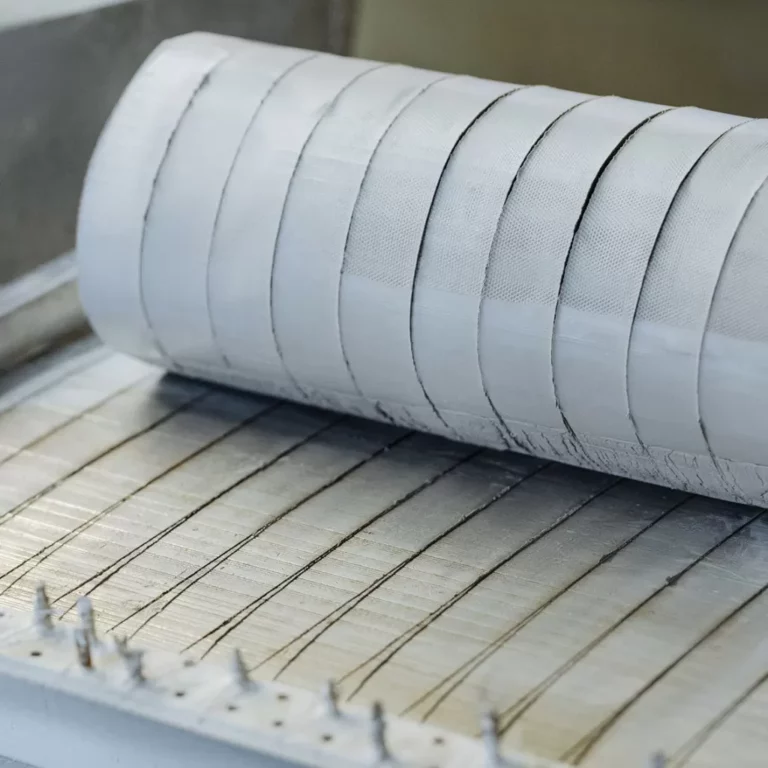

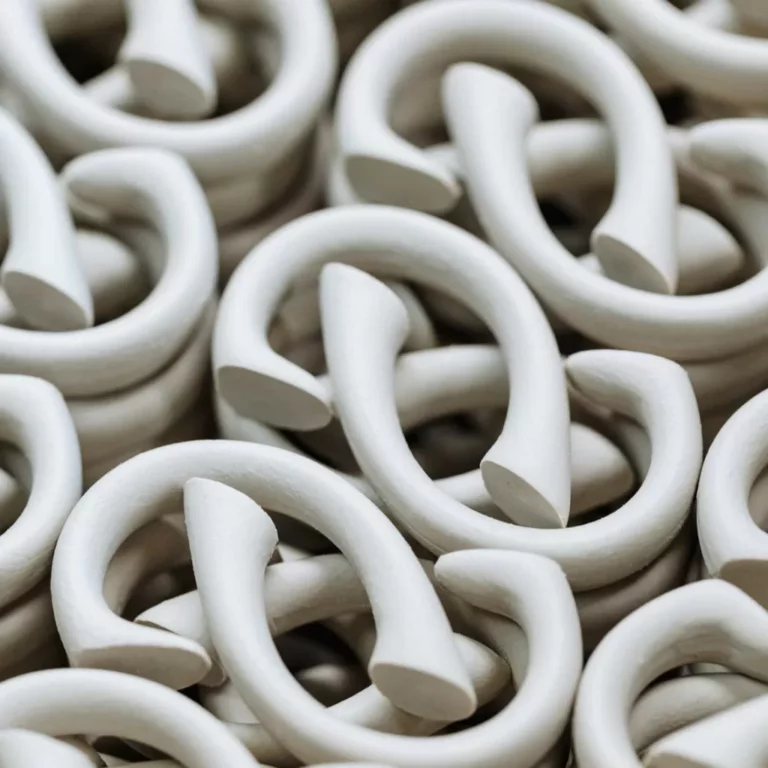
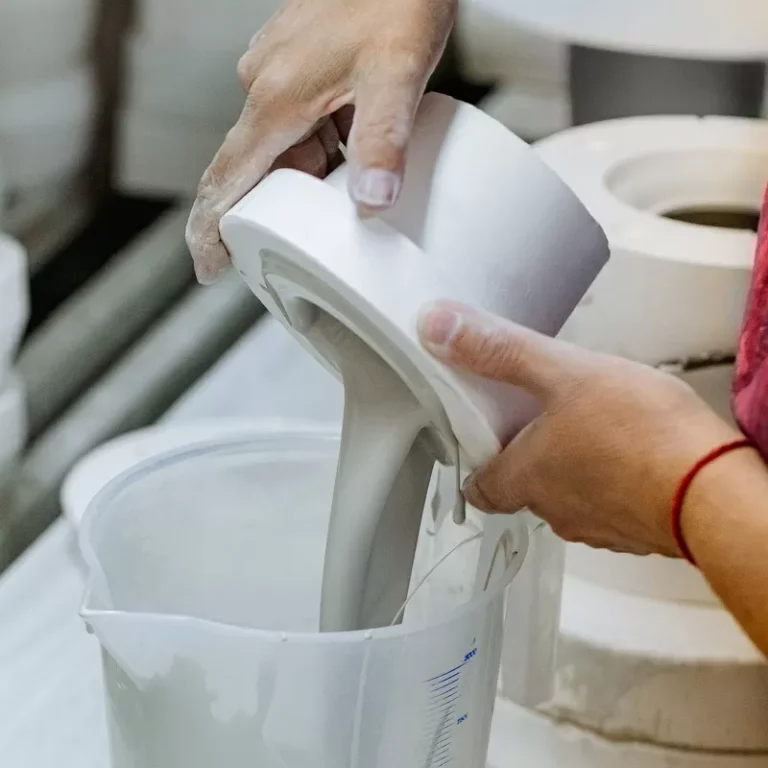
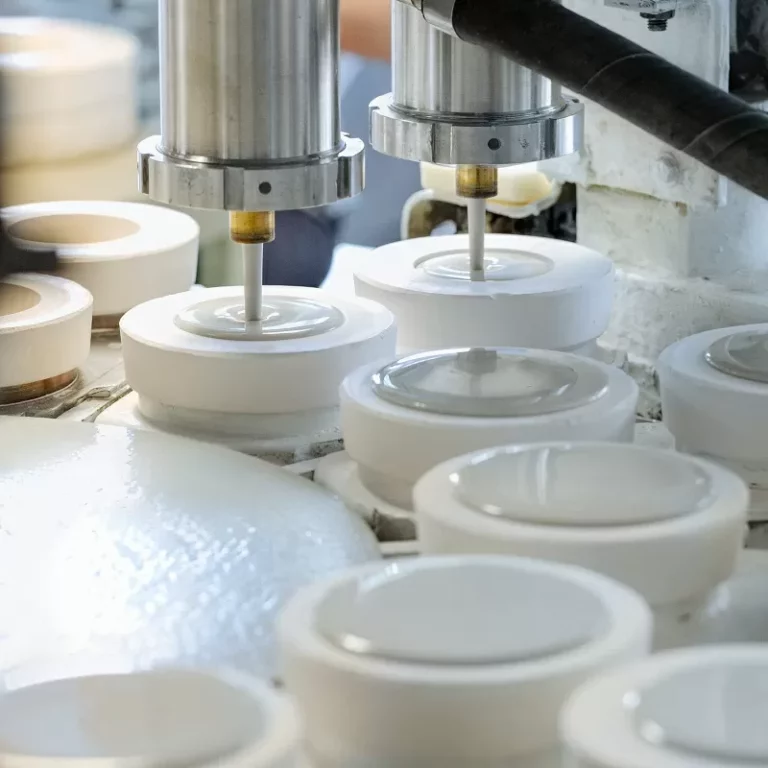
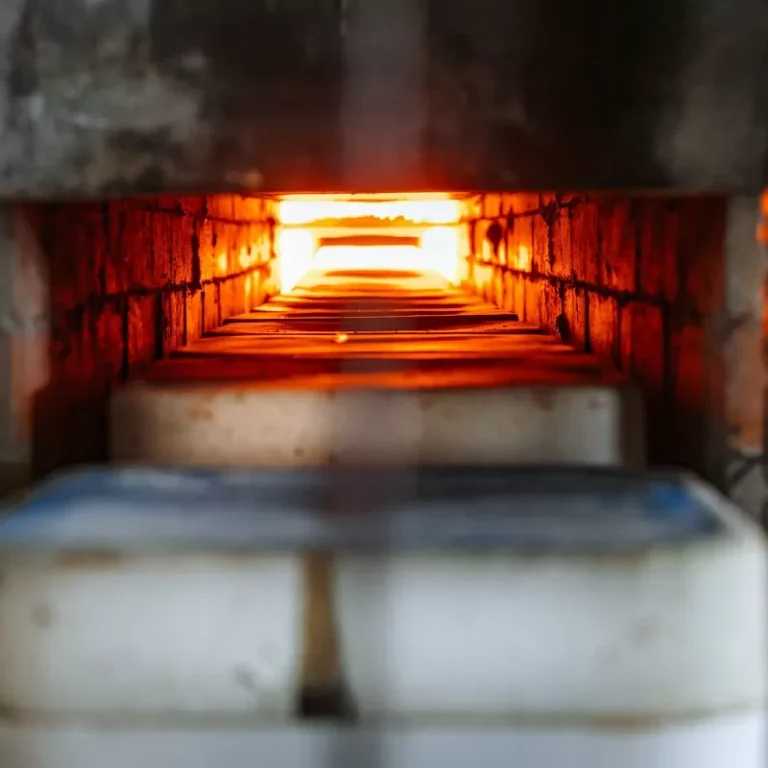
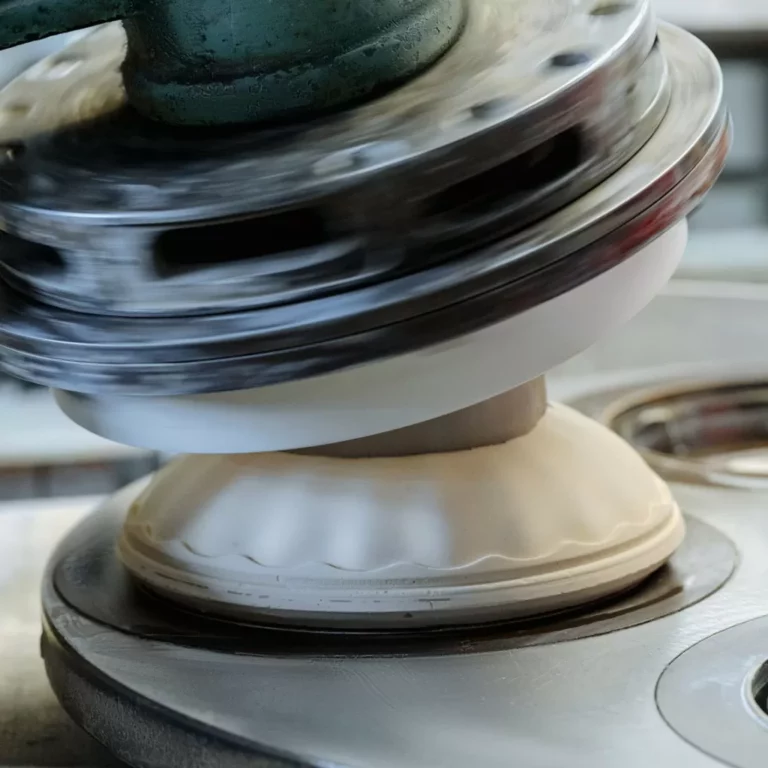
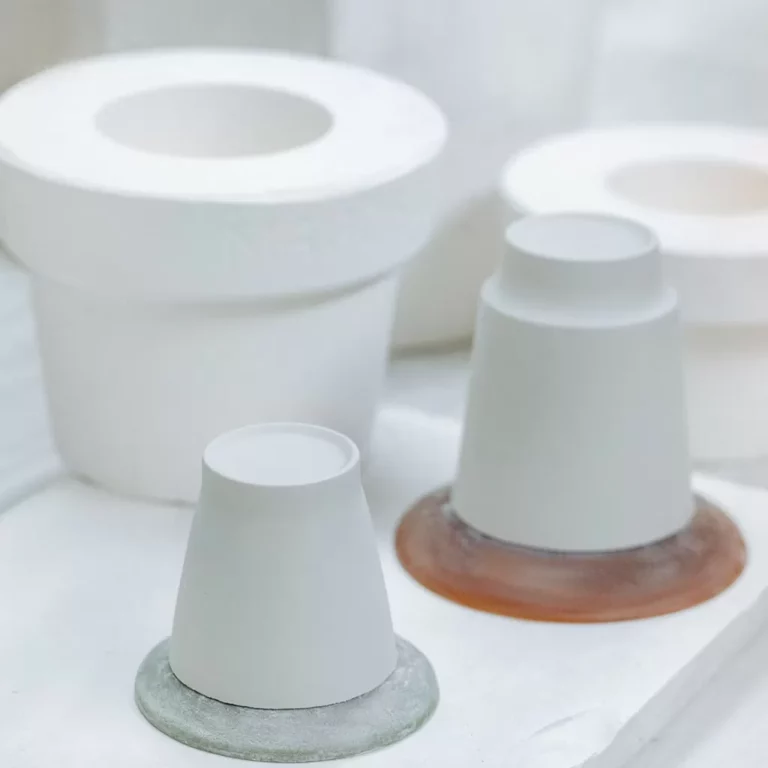

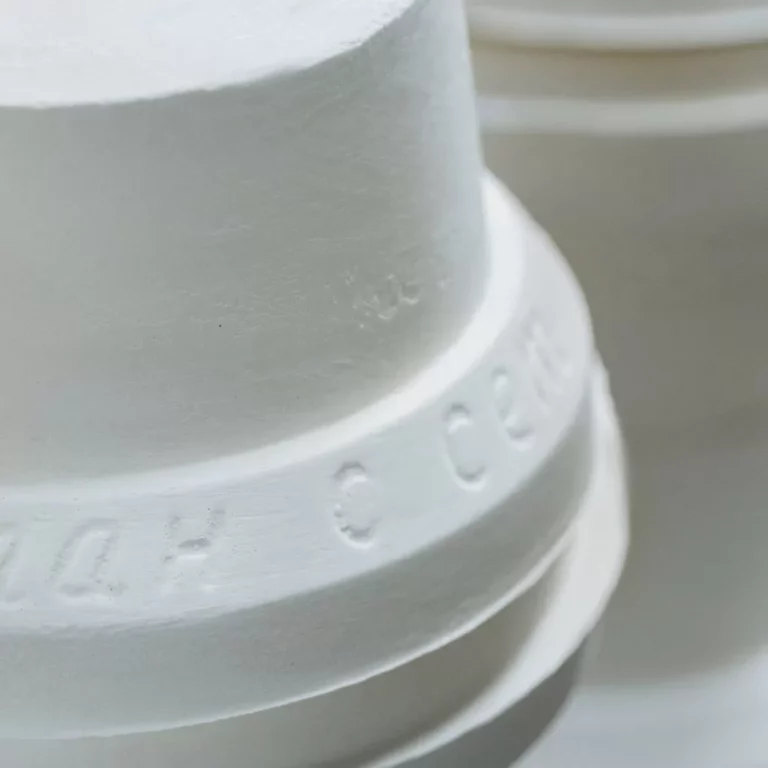

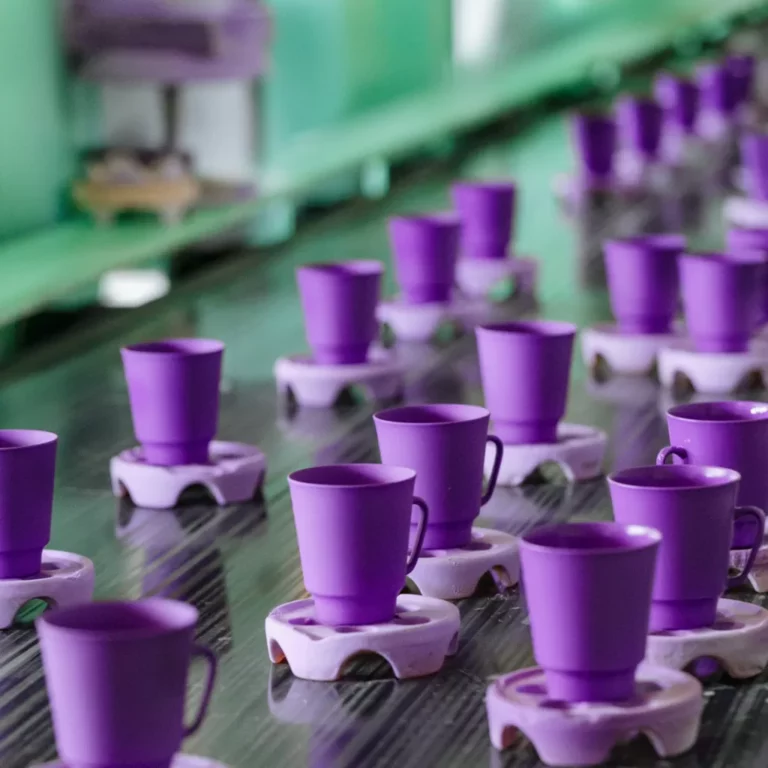
The Imperial Porcelain Manufactory products are decorated with hand or machine-made overglaze and underglaze painting, or a combination of these. Underglaze paints are applied to the raw ceramic body. They are more durable as protected with glaze but are limited in colour palette. The most popular option is dark blue cobalt. Overglaze paint fired at lower temperatures (720–860°С) benefits from a wider diversity of colours. Many ceramic paints discolour in the course of firing, thus expanding porcelain painting opportunities.
The products are decorated with decal, a transfer picture printed with ceramic paints on the gummed paper and covered with special varnish. When the decorated product is fired, the film burns out and the paint sticks to the glaze, leaving the picture. This decoration technique coupled with manual finishing drawing scales up the output significantly.
The Imperial Porcelain Manufactory is world-famous for its sophisticated hand-made painting. A wide range of articles is decorated with natural gold and engraved pictures. The majority of tableware, vases and almost all animal sculptures are underglazed. Owing to one of our most popular combinations – deep underglaze cobalt coupled with bright overglaze colour and gold, the eye-catching products of the IPM look especially spectacular.
The Imperial Porcelain Manufactory managed to preserve such unique technologies as cobalt covering and underglaze landscape painting that date back to the end of 19th century.A new casting and moulding shop with high-technology equipment is expected to be launched in the short run. The IPM successfully applies advanced 3D modelling technology to accelerate mould development process and, as a result, offer you an increasing number of new products.
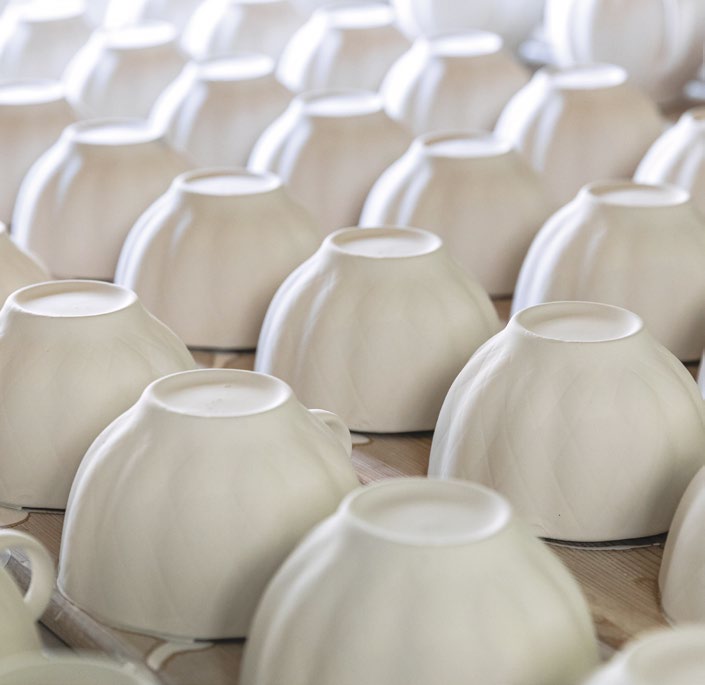
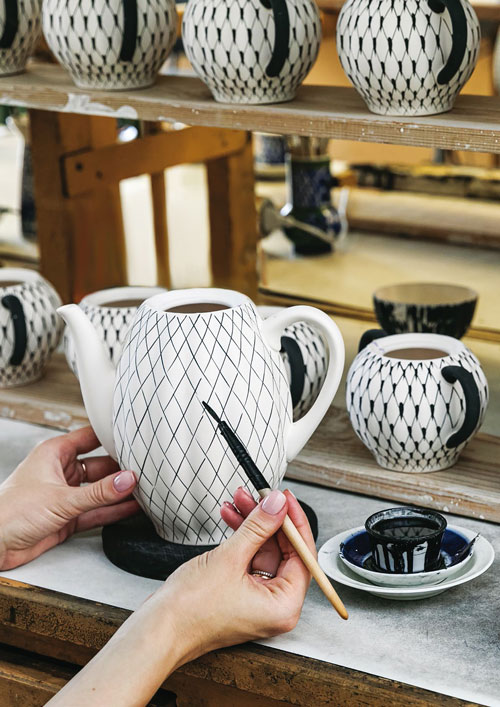

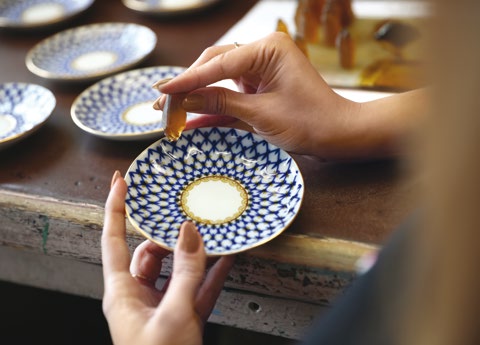


Final product
The Imperial Porcelain Manufactory offers about 4 000 products varying in shape and patterns: tea, coffee and dinner sets, individual tableware, gifts and souvenirs, genre and animal sculptures, decorative dishes, plates, etc. They are made of hard-paste, soft-paste and bone porcelain. Our products are decorated with hand or machine-made overglaze and underglaze painting, or a combination of these, with paints based on rare and precious metals. As an option, you can order customized replicas of museum displays of the 18th – 20th centuries or corporate dishware marked with your logotype or monogram.
Years of experience
High-quality materials
Items

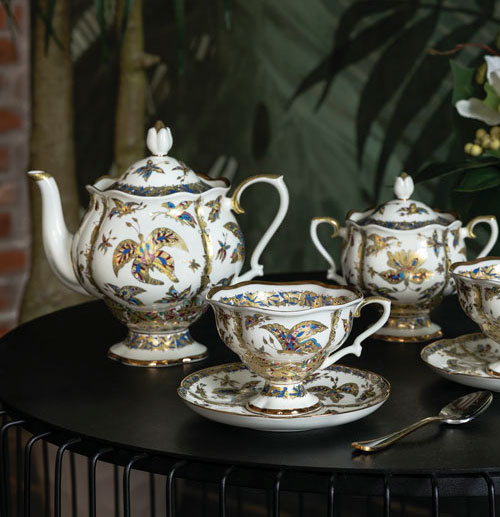
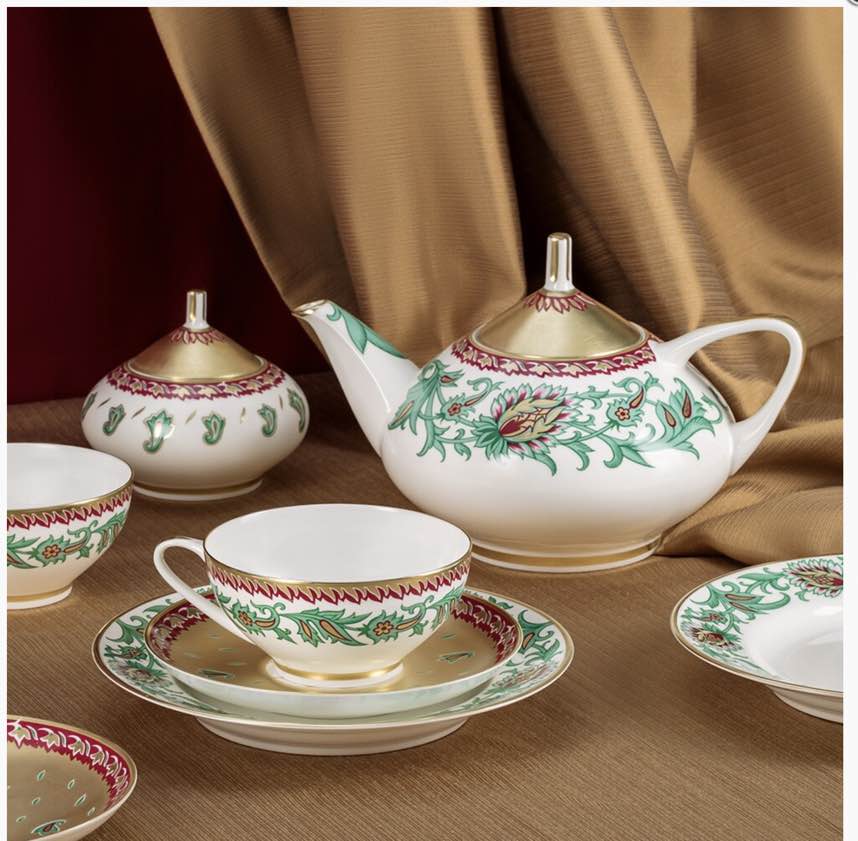
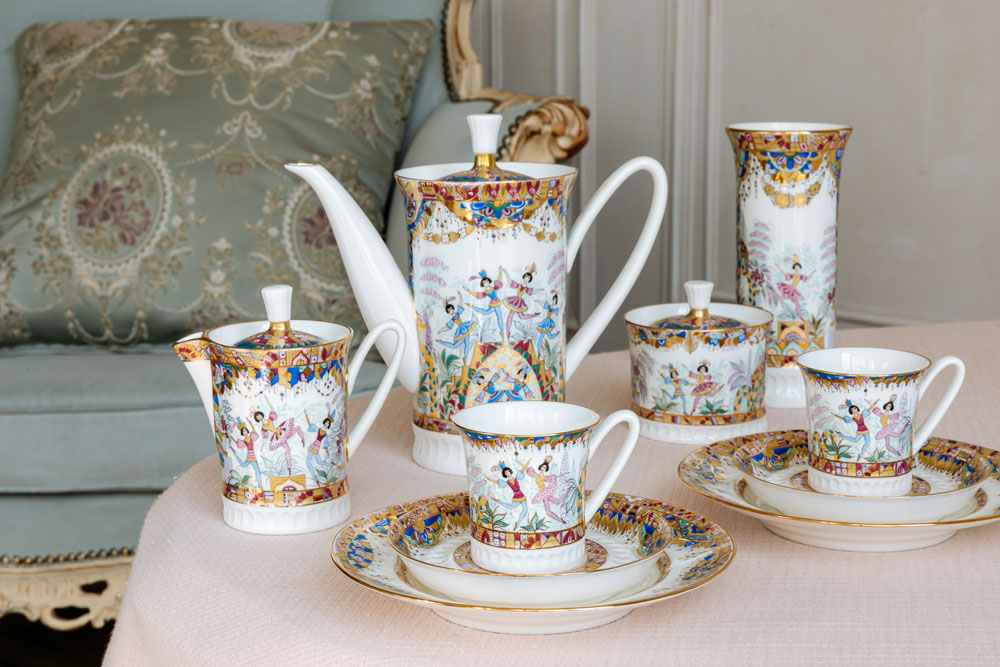
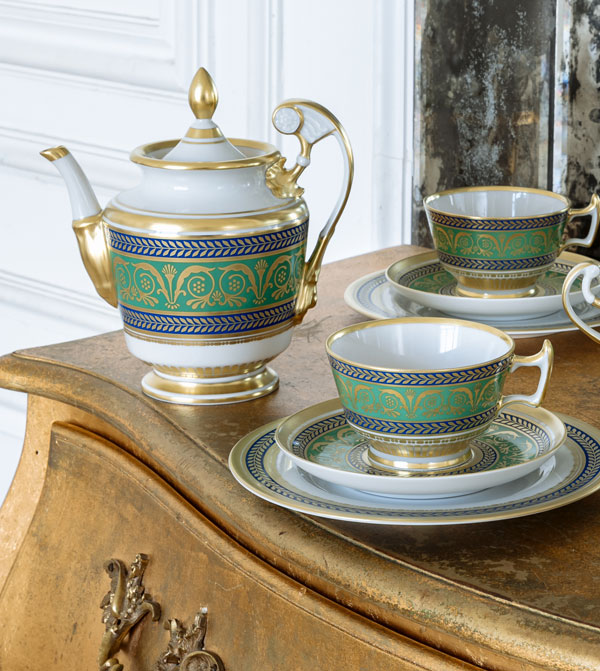

Porcelain sets covered with our proprietary pattern, Cobalt Net (S.E. Yakovleva, A.A. Yatskevich), which won the golden medal at the Brussels World’s Fair, have been extremely popular for decades. Russian and foreign customers also admire products designed by A.V. Vorobyevsky and I. I. Riznich, People’s Artists of Russia, N.P. Slavina, member of the Academy of Arts, I. S. Olevskaya, award winner of the Academy of Arts and the International Quadrennial in Erfurt, N.L. Petrova, T.V. Afanasyeva, G.D. Shulyak, S. A. Sokolova, M. A. Sorokina, Yu. Ya. Zhgirova, etc.
These names are supplemented by the names of talented young artists who continue to develop the glorious traditions of the St.Petersburg school of porcelain. Many works applied art produced at the factory are exclusive: hand-made and one-of-a-kind.
The Imperial Porcelain Manufactory makes a wide range of products varying from home dinner sets and souvenirs to festive tableware at the presidential level, diplomatic gifts to the foreign heads of states, and major competition and festival prizes. For example, we supplied all tableware for gala receptions held during the celebration of the 300th anniversary of Saint Petersburg.
The Lomonosov Porcelain Manufactory products (the trademark was registered in 1936) are exported to such developed countries as Canada, France, Germany, Japan, Norway, Sweden, UK, USA, etc. Accounting for 15% of total sales, the USA has been our key export market for years, followed by Germany and the UK. A positive promotion trend is also observed in Canada, France, Italy and Japan.
HISTORY OF THE MANUFACTORY
- 1744
- 1762-1801
- 1801-1825
- 1825 - 1894
- 1894-1917
- 1918 - 1930
- 1930-1950
- 1950-1990
- Now
FOUNDATION OF MANUFACTORY UNDER EMPRESS ELIZABETH OF RUSSIA
 Established in 1744 in Saint Petersburg by order of Empress Elizabeth, the daughter of Peter the Great, the Imperial Porcelain Manufactory became the first porcelain works in Russia and the third one in Europe.
Established in 1744 in Saint Petersburg by order of Empress Elizabeth, the daughter of Peter the Great, the Imperial Porcelain Manufactory became the first porcelain works in Russia and the third one in Europe.A little more than three centuries ago the Europeans had no idea from what porcelain was made. Chinese masters carefully guarded the secrets of its production. Owing to its rarity and price porcelain was valued as gold and it was often called “white gold”...
RISE OF RUSSIAN PORCELAIN DURING THE REIGN OF CATHERINE II AND PAUL I. EARLY CLASSICISM.
 The Golden Age of Catherine II, called the Great, became the period when the art of porcelain reached its fullest development in Russia. From the very beginning of her reign Catherine gave much attention to porcelain production. Before going for her coronation to Moscow, she entrusted the Cabinet of Her Imperial Majesty to select the best porcelain articles at the manufactory and send them to the former capital of Russia for display and sale. In a year the empress visited the enterprise and bought 29 snuff-boxes there.
The Golden Age of Catherine II, called the Great, became the period when the art of porcelain reached its fullest development in Russia. From the very beginning of her reign Catherine gave much attention to porcelain production. Before going for her coronation to Moscow, she entrusted the Cabinet of Her Imperial Majesty to select the best porcelain articles at the manufactory and send them to the former capital of Russia for display and sale. In a year the empress visited the enterprise and bought 29 snuff-boxes there.RE-ORGANISATION UNDER ALEXANDER I. HIGH CLASSICISM
 Alexander I (1801–25). Alexander I inherited an interest in the porcelain factory, too. But the turbulent historic events that befell to his reign did not allow the emperor, who defeated Napoleon and saved Europe, from giving due attention to the development of Russian porcelain. The only man, who was responsible for the state of affairs at the Imperial Porcelain Manufactory throughout the reign of Alexander I,became the manager of the Cabinet of His Imperial Majesty, Count Dmitry Guryev. In 1809 Dmitry Guryev, who was eager to make the art department impeccable, invited the sculptor Stepan Pimenov, an adjunct-professor of the Academy of Arts, to the factory...
Alexander I (1801–25). Alexander I inherited an interest in the porcelain factory, too. But the turbulent historic events that befell to his reign did not allow the emperor, who defeated Napoleon and saved Europe, from giving due attention to the development of Russian porcelain. The only man, who was responsible for the state of affairs at the Imperial Porcelain Manufactory throughout the reign of Alexander I,became the manager of the Cabinet of His Imperial Majesty, Count Dmitry Guryev. In 1809 Dmitry Guryev, who was eager to make the art department impeccable, invited the sculptor Stepan Pimenov, an adjunct-professor of the Academy of Arts, to the factory...ERA OF NICHOLAS I, ALEXANDER II AND ALEXANDER III
 The Imperial Porcelain Manufactory provided almost all St. Petersburg palaces with its dinner sets during the reign of Alexander I and Nicholas I (1825-1855). Porcelain ware enjoyed the extensive diversity of styles. Among others, so-called Russian trend took the root. Fedor Solntsev, a Russian archaeologist and virtuoso, designed dinner sets for the Great Kremlin Palace in Moscow and Grand Duke Konstantin Nikolayevich of Russia.
The Imperial Porcelain Manufactory provided almost all St. Petersburg palaces with its dinner sets during the reign of Alexander I and Nicholas I (1825-1855). Porcelain ware enjoyed the extensive diversity of styles. Among others, so-called Russian trend took the root. Fedor Solntsev, a Russian archaeologist and virtuoso, designed dinner sets for the Great Kremlin Palace in Moscow and Grand Duke Konstantin Nikolayevich of Russia.In the time of Nicholas I, porcelain stood out for its artful painting. The vases displayed the old masters’ chef d’oeuvres (Leonardo da Vinci, Raphael, Titian, Correggio, Murillo, etc.) mostly from the Hermitage collection.
REIGN OF NICHOLAS II AND RUSSIAN ART NOUVEAU. PRE - REVOLUTION TIME.
 During the reign of the last Russian Emperor Nicholas II (1894–1917), thanks to the technical innovations of the previous period, the plant experiences state samples in technical and technological respects. The wealth of art technology is the pride of the factory, and later, during the years of the First World War, whole economic and electrical porcelain were involved. All large orders were made by Emperor Alexandre Fedorov, who was at the World Exhibition in Paris in 1900. These are the services of "Alexandrinsky" and "Tsarskoye Selo."
During the reign of the last Russian Emperor Nicholas II (1894–1917), thanks to the technical innovations of the previous period, the plant experiences state samples in technical and technological respects. The wealth of art technology is the pride of the factory, and later, during the years of the First World War, whole economic and electrical porcelain were involved. All large orders were made by Emperor Alexandre Fedorov, who was at the World Exhibition in Paris in 1900. These are the services of "Alexandrinsky" and "Tsarskoye Selo."OCTOBER REVOLUTION AND PORCELAIN IN THE 1920S
 In March 1918 the State Porcelain Factory was put under the guardianship of People’s Commissariat for Education. The enterprise personnel was set a task to convert the former court man ufactory as soon as possible into an “experimental ceramic laboratory of republican significance”, producing “propaganda porcelain in the high meaning of this work – revolutionary in content, perfect in form and impeccable in its technical execution.” The first post-revolutionary years were marked by a truly unseen boom of mass-scale propaganda art. In this festive polyphony of resounding and vivid colours, in the use of special imagery for the propaganda of the victorious revolution, porcelain products occupied a prominent place.
In March 1918 the State Porcelain Factory was put under the guardianship of People’s Commissariat for Education. The enterprise personnel was set a task to convert the former court man ufactory as soon as possible into an “experimental ceramic laboratory of republican significance”, producing “propaganda porcelain in the high meaning of this work – revolutionary in content, perfect in form and impeccable in its technical execution.” The first post-revolutionary years were marked by a truly unseen boom of mass-scale propaganda art. In this festive polyphony of resounding and vivid colours, in the use of special imagery for the propaganda of the victorious revolution, porcelain products occupied a prominent place.THE PERIOD BEFORE AND DURING THE SECOND WORLD WAR
 Following industrialization and collectivization carried out in the country, as a result of which, according to the party documents, “a victory of Socialism was ensured in the USSR”, a wide-scale “cultural construction” started in the early thirties. Socialist Realism, practically denying all alternative trends in art and literature, was proclaimed as the only true method to be used by Soviet artists. The Lomonosov Porcelain Factory that had rich cultural traditions and professional personnel came to be regarded as the basis for the creation of a new style consonant with socialist everyday life.
Following industrialization and collectivization carried out in the country, as a result of which, according to the party documents, “a victory of Socialism was ensured in the USSR”, a wide-scale “cultural construction” started in the early thirties. Socialist Realism, practically denying all alternative trends in art and literature, was proclaimed as the only true method to be used by Soviet artists. The Lomonosov Porcelain Factory that had rich cultural traditions and professional personnel came to be regarded as the basis for the creation of a new style consonant with socialist everyday life.SOVEIT PERIOD: CREATION OF THE BEST
 In post-war art, after the asceticism of the blockade years, the overwhelming need for beauty and joy is expressed. In porcelain painting, fertility and wealth in the works of Anna Efimova, folk popular motifs and fairy-tale fantasies by Alexei Vorobyevsky, decorative ornament of Anna Yatskevich became an example of this. In sculpture - the theme of childhood and motherhood in the works of Sofia Velikhova and Galina Stolbova. The animal world and literary characters are represented in the plastic of Boris Vorobyov. A talented illustrator and writer Yevgeny Charushin, outstanding sculptors Vera Mukhina and Elena Yanson-Manizer, who embodied...
In post-war art, after the asceticism of the blockade years, the overwhelming need for beauty and joy is expressed. In porcelain painting, fertility and wealth in the works of Anna Efimova, folk popular motifs and fairy-tale fantasies by Alexei Vorobyevsky, decorative ornament of Anna Yatskevich became an example of this. In sculpture - the theme of childhood and motherhood in the works of Sofia Velikhova and Galina Stolbova. The animal world and literary characters are represented in the plastic of Boris Vorobyov. A talented illustrator and writer Yevgeny Charushin, outstanding sculptors Vera Mukhina and Elena Yanson-Manizer, who embodied...TRADITIONS AND MODERN TRENDS
 The year 2002 witnessed an event that marked the start of a new period in the history of the enterprise: the controlling shareholding was bought out from the foreign owners by the family of well-known Russian entrepreneurs and donators – Nikolay Tsvetkov and Galina Tsvetkova. Galina Tsvetkova, an art collector, connoisseur and expert in Russian artistic porcelain, was appointed Chairman of the Overseeing Committee of Lomonosov Porcelain Factory Company
The year 2002 witnessed an event that marked the start of a new period in the history of the enterprise: the controlling shareholding was bought out from the foreign owners by the family of well-known Russian entrepreneurs and donators – Nikolay Tsvetkov and Galina Tsvetkova. Galina Tsvetkova, an art collector, connoisseur and expert in Russian artistic porcelain, was appointed Chairman of the Overseeing Committee of Lomonosov Porcelain Factory Company

